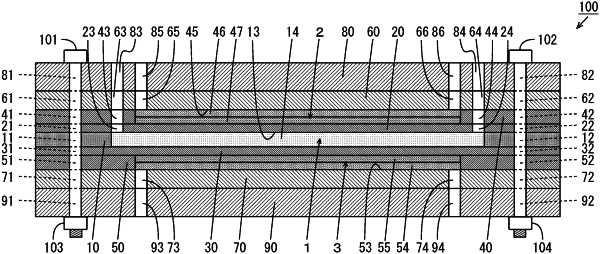| CPC G01N 30/02 (2013.01) [B01D 15/367 (2013.01); G01N 30/96 (2013.01)] | 7 Claims |

|
1. An ion suppressor that carries out ion exchange between an eluent and an electrode liquid from a separation column of an ion chromatograph, comprising:
first and second electrodes;
first and second electrode liquid seal members arranged between the first electrode and the second electrode;
first and second ion exchange membranes arranged between the first electrode liquid seal member and the second electrode liquid seal member; and
an eluent seal member arranged between the first ion exchange membrane and the second ion exchange membrane and having an eluent flow path for allowing an eluent to pass through,
wherein the first electrode liquid seal member has a first electrode liquid flow path for allowing the electrode liquid to pass through,
the second electrode liquid seal member has a second electrode liquid flow path for allowing the electrode liquid to pass through,
a plurality of first mesh members having different charge amounts are stacked in the first electrode liquid flow path of the first electrode liquid seal member,
each of the plurality of first mesh members is comprised by a first wire group comprising a plurality of first wires and a second wire group comprising a plurality of second wires crossing the first wire group, and
the plurality of first wire groups of the plurality of first mesh members respectively extend in different directions, and the plurality of second wire groups of the plurality of first mesh members respectively extend in different directions and extend in directions different from the directions of the plurality of first wire groups.
|